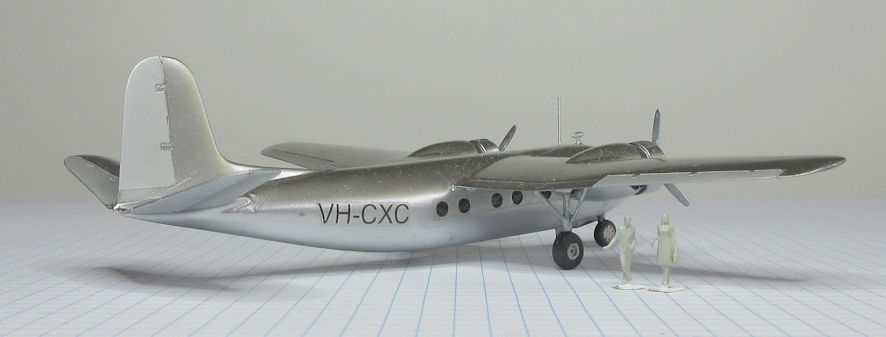Rare Australian Airliners
Airspeed Ambassador – Consolidated LB30 – Douglas DC-5
My enthusiasm for airliners comes to the surface again with this week’s choices. I happened to be looking at the Douglas DC-5 which would not normally have flown in Australia but ended up here because of World War II. ‘How many other unusual airlines have flown in Australia?’, I wondered. And here are three that did.
First, in alphabetic order, is the Airspeed Ambassador which was the wrong airliner in the wrong place at the wrong time. It was a medium airliner designed in the 1950s as a replacement for the popular Douglas DC-3. Unlike the best of this new generation of airliners, the Fokker F-27 which was powered by turboprop jet engines, the Ambassador had old fashioned piston engines. As a result it did not prove very popular and only 23 were manufactures. Three of them were imported to Australia by Butler Air Transport which flew services in regional New South Wales. However, less than a year after their arrival in 1957 Butler Air Transport was taken over by Air Transport Industries which did not want the Ambassadors so they were sent back to Britain.
Second is the Consolidated LB30 which was an early version of the famous B-24 bomber. LB30s were ordered from the United State manufacturer Consolidated by Britain but when they arrived there the RAF found they were unsuitable for combat over Europe. As a result they were put to other uses and some were converted to carry passengers and freight and some were operated by BOAC. Through the close association BOAC had with Qantas two were loaned to Qantas to fly on the long route from Australia to Ceylon, beginning in 1944. Initially two LB30s were loaned to Qantas and then another two, which flew with that airline until 1950, often as a freighter carrying engines for the Lockheed Constellations that began flying for the airline in 1947 but had troublesome engines.
Finally this time is the Douglas DC-5 which was designed to carry 16 to 20 passengers over shorter ranges than Douglas’s DC-3s and DC-4s. It was ready for service just as World War II began and so only 12 were manufactured. Of those five entered airline service, four with KNILM, an airline flying in the Dutch East Indies (now Indonesia). Three of them came to Australia with the evacuation that followed the Japanese invasion in 1942. Of those only one survived at the end of 1942 and it was flown by Australian National Airways until it was sold to another airline and then smuggled to Israel in 1948 where it was involved in military activities.


